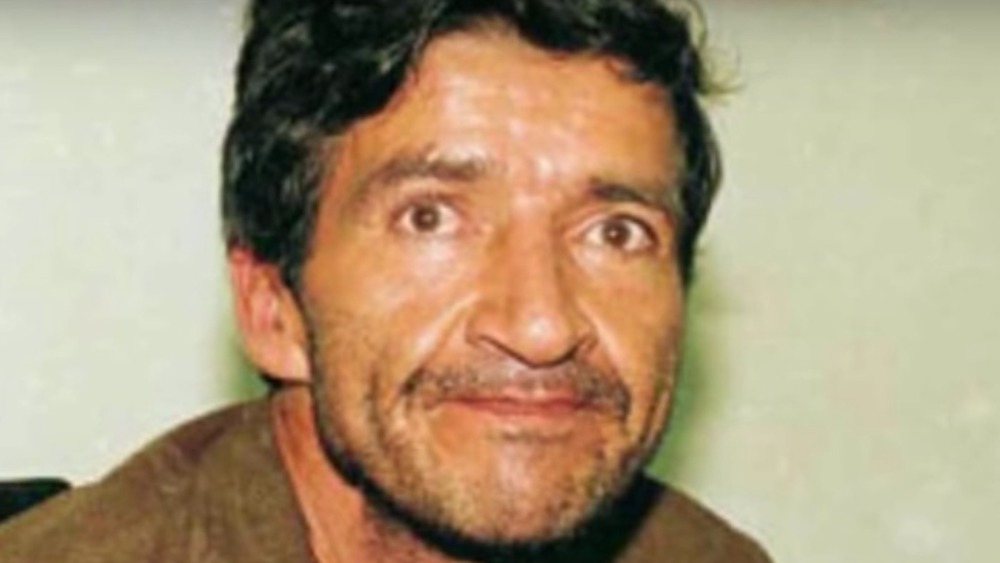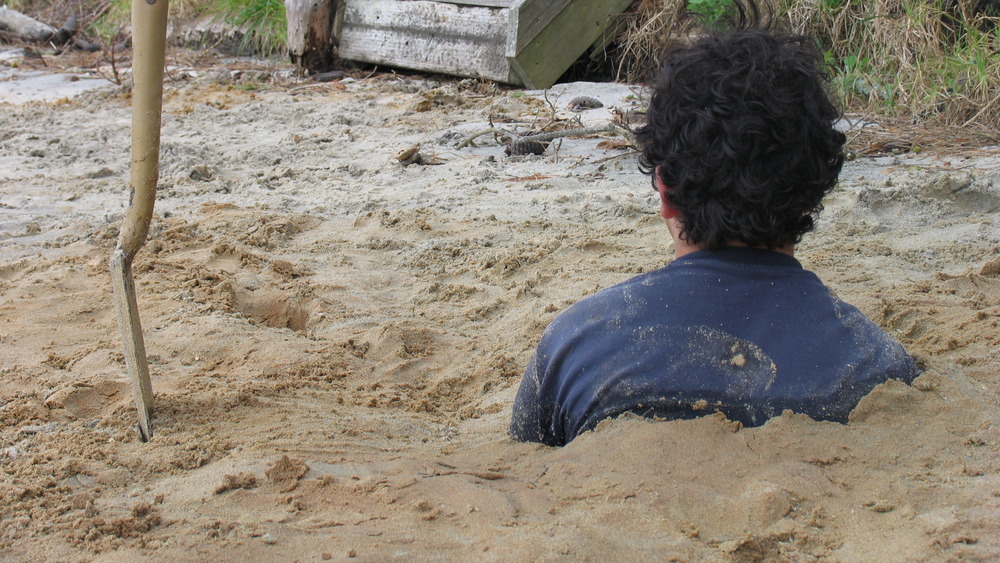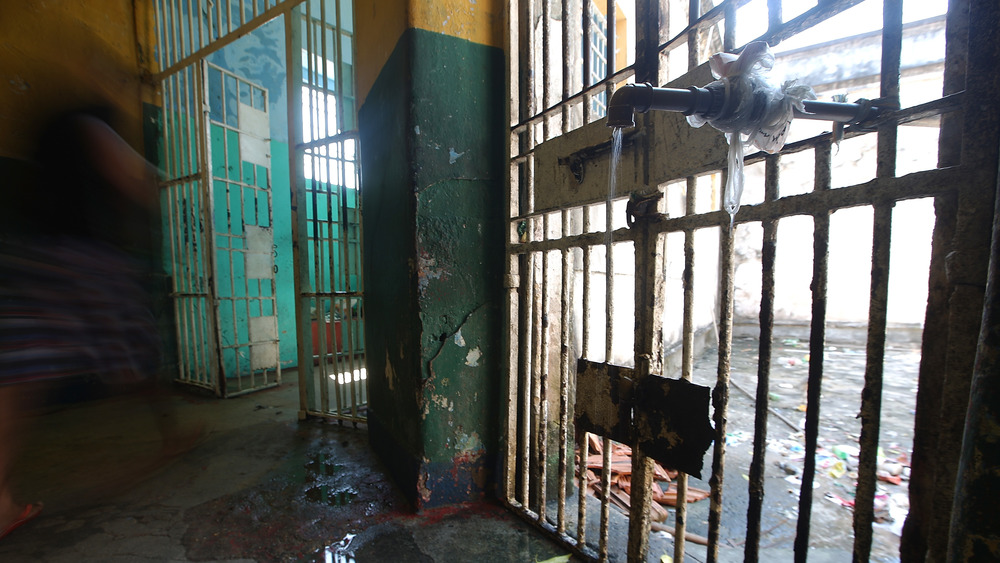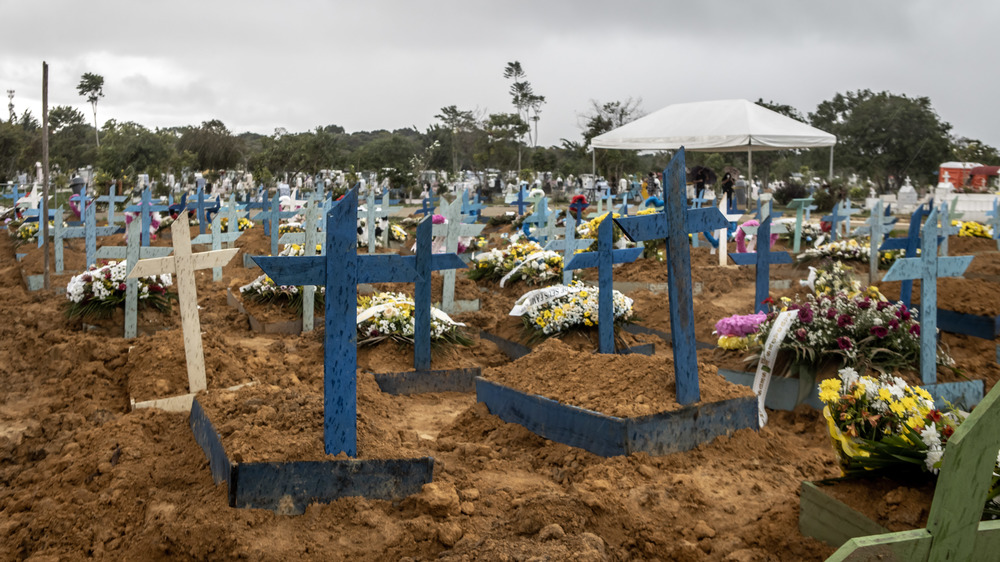The Untold Truth Of Pedro Alonso Lopez, The Monster Of The Andes
We've heard many dark stories about serial killers, stories that would give us nightmares. John Wayne Gacy gave the fear of clowns a tangible terror. Jeffrey Dahmer and other killers of his ilk turned cannibal and fed the flesh of their victims to unsuspecting guests. Ted Bundy showed the world just how deceitful charm could be. The list goes on and on, but none of these killers hold a candle to the crimes committed by the Monster of the Andes.
Not every serial killer's nickname accurately depicts the nature of the person who carries it, but for Pedro Alonso López, "The Monster of the Andes" sums it up concretely. He was a monster of proportions rarely ever seen on this Earth, a killer whose victim count makes even the most prolific serial killer from the United States look like an amateur by sheer numbers alone. But that's not the only thing that makes this murderer a truly terrifying horror. The types of victims he killed, the way in which he committed his acts, and the demented way he discussed his love for killing after the fact make López one of the sickest murderers of all time.
His childhood may have helped shape his depravity
Tragic and abusive upbringings have been thought to factor into the makings of a serial killer for some time now. Violent ideas drilled into the minds of young people have lasting effects that shine in toxic ways through the Pedro Alonso López case.
As mentioned by Serial Killer Documentaries' piece about López (posted on YouTube), his mother was overbearing and strict, but even that was a welcome reprieve from the outside world of Colombia during the 1950s. The documentary mentions that this time was known as The Violencia Period, marked by atrocious acts of violence during a tumultuous civil war. The soon-to-be killer was kicked out of his home at a young age and sent to live on the streets for sexually assaulting his younger sister, according to Rolling Stone. The publication goes on to detail how López's life didn't get any easier from there.
The young killer would go on to have atrocities similar to the ones he inflicted on his sister visited upon himself. He was assaulted physically and sexually by authority figures, including teachers and foster parents, as well as by cellmates once he found himself in jail. Throughout his early life, López was also tossed from place to place, living as a vagrant, begging for his meals.
The tragic nature of López's upbringing doesn't negate the carnage he would inflict as the Monster of the Andes, but it does provide evidence that terrible upbringings can influence serial killer tendencies.
One of the most prolific killers in all of history
It's entirely possible that López qualifies as the single most prolific serial killer of all time, both in terms of lives ended and torment perpetrated. His murders began, as Serial Killer Documentaries points out, when he hunted down and murdered boys in prison while he was a teenager. He killed them one by one after they'd mobbed him and sexually assaulted him, but these killings were separate from his serial killer MO. The prison killings were revenge. When not behind bars, the Monster of the Andes specifically targeted young girls from indigenous tribes to sate his serial killing hunger, and he killed enough of these girls, who were between nine and 12 years of age, to make you sick.
According to the Biography episode about López (posted at Daily Motion), the Monster of the Andes admitted to killing hundreds of young girls throughout Ecuador, Colombia, and Peru after his arrest (which is something we'll get to shortly). At first, the authorities weren't sure if his confession was simply the ravings of a madman, or if one killer had actually wracked up such an unbelievable body count. To prove he was telling the truth, López led the authorities to the gravesites of 57 of his victims. Officially, he was charged with 110 counts of murder, but it's believed he murdered hundreds more than what's already been found.
Saved from death by a missionary
He wasn't saved from being put to death in the way we normally think of in the United States. When we hear that phrase here, it usually means a killer has been given a life sentence in place of the death penalty. For the Monster of the Andes, it meant he was set free to continue his killing spree in another country, something that would happen far too many times.
López, according to Serial Killer Documentaries, was captured by an Ayacucho tribe in Peru after attempting to abduct a nine-year-old girl in the '70s. The tribe tortured him for his crimes and buried the killer alive, up to his neck. They believed a person like him shouldn't be left to walk this Earth, and they were ready to take his life. His story would've ended here if it wasn't for a missionary from the west who, as All That's Interesting points out, convinced the tribe that even killing a killer was immoral. The tribespeople released López. Little did the missionary know that López's death would've prevented hundreds more innocent lives from being taken.
López was given over to the Peruvian authorities, who deported him to Colombia,d where he wasn't charged. As is a common issue regarding indigenous people, rather than deal with the hassle of the killings of these indigenous children, the authorities let the case go. From there, the Monster of the Andes was free to kill as he liked.
Jailed and freed and jailed and freed
You'd think that with a kill count as high as López's, the authorities would have wanted to keep him behind bars for the long haul. That doesn't seem to be the case. His first serial killer-related arrest came in 1980 when he tried to lure a young girl away right after a flood had exposed the bodies of several missing girls — some of his previous victims.
After being arrested in Ecuador and convicted of more than 100 murders, the Monster of the Andes was sentenced to what ThoughtCo says was a total of 20 years behind bars, though Deseret News notes that he was released in 1992 after serving only 12 years of his sentence before being taken to the Colombia border and kicked to the curb. The Biography episode about this killer states that López knew that one murder carried the same sentence as a thousand in the country, and he was bound to once again walk in the open air.
As if knowing of López's crimes wasn't enough to fill your nightmares on their own, it gets worse. Once in Colombia, the killer was arrested again and spent time in a final four-year stint within a Colombian psychiatric facility. He was then deemed "sane" and released once again in 1998. Since then, the Monster of the Andes has taken to the wind, where he remains to this day.
He reveled in his victim's deaths
Years after being captured in Ecuador, López took part in an interview in which he detailed his killings and the pleasure he felt from his demented acts. According to a summary containing parts of the interview on The True Crime Database, he cites his "innocence" being taken away from him at such a young age as the reason his murderous tendencies began, his past twisting his mind into something beyond sick.
The Monster of the Andes goes on to detail how he'd follow a child "sometimes for two or three days" before luring her off with a "pretty, shining trinket" the moment she was left alone. From there, he'd take victims to the edge of town, where he'd show them affection and treat them lovingly until the sun began to rise. López needed the light when he sexually assaulted and strangled his victims. He needed to see their eyes as they struggled and died. "It would have been wasted in the dark, I had to watch them by daylight," the killer admits. López says the moment he killed his victims was "divine" and that only killers could know the pleasure he felt.
The ravings sound like something you'd hear from the worst Hannibal Lecter-type killers, containing details about López having "parties" with his victims' corpses until he grew bored of them and went off to find new ones to play with.
López was released early from his hospitalization and disappeared. He hasn't been seen since, alive or dead.





